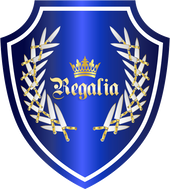Basic Knife Skills & Satefy Tips
Training your hands to properly hold and operate a knife can take time to get used to and sometimes be uncomfortable. However, something far more uncomfortable and harder to grow accustomed to is relearning it after having cut oneself. Even accidental cuts can have long lasting and significant consequences. Hands are full of tendons vital to your dexterity and cutting one of these tendons can prove life altering.
Here are few quick tips:
1. A dull knife can be more dangerous than a sharp one.

When you use a dull knife to cut, you need to apply more force. As a result, the knife is more likely to slip which increases the risk of injury. Keeping your knives sharpened is one of the easiest ways to keep them safe. Simply use a sharpening stone or knife sharpener to maintain the original precision of the blade. If your knife needs just a touch up between thorough sharpenings, try using a sharpening steel.
How Sharp Should My Knife Be?
The sharper the better? Not always. Regalia Emperor Series knives come with a staggering 8-12 degree edge. That's scary sharp. Most professionals would tell you to keep your angle between 15-20 degrees to balance sharpness and durability. In general this is true. How Emperor Series knives get their durability from the steel itself rather than the obtuseness of the blade edge. Therefore, they can afford to be a bit sharper than your average blade. If you use your knife to cut hard ingredients often, it may be beneficial to keep a slightly less sharp edge.
2. Hold your knife in the proper way
It's called a "pinch grip" for a reason. Using your thumb and index finger, pinch the blade area directly in front of the bolster and curl your remaining fingers loosely around the handle focusing your grip primarily on pinch between your thumb and index fingers. This grip allows for laser like precision and comfort.

3. Positioning your guiding hand
What we are about to describe is loving dubbed "the claw" by cooks, the world over. First, make a claw shape with your guiding hand, curling your fingers inwards. Keeping this shape, rest your fingertips on the food item creating a "shield" of sorts by keeping your knuckles in contact with the side of the blade. Make sure that your thumb is also tucked in or out of harm's way. After each cut, walk your fingers back slightly across the food item. Always keep the tip of your knife in contact with the cutting board to remove any change that your blade may overshoot "the claw".
*Never ever use your palm as a cutting board nor cut toward yourself. Always away from yourself.
4. Choose the Right Knife for the Task
Correctly selecting a knife for the task at hand is one of the most fundamental knife safety tips that foodservice professionals should learn. However, making this choice can be overwhelming because of the wide variety of styles, shapes, and sizes of commercial cutlery.
How to Choose the Right Knife
When choosing your knife, here are some things you should consider:
- Blade size: Choose a knife that is proportional to the food you’re cutting. For example, a small paring knife will not be very useful for butchering a large cut of meat, so use a cleaver instead.
- Flexibility: Certain tasks require a flexible blade, while others need a firm one. Think about the knife you’d choose to remove scales from a fish compared to the knife you’d need to cut potatoes.
- Blade edge: The edge of the blade can make your job much easier or make it harder. For instance, serrated knives are excellent for cutting through foods with tender centers, while Granton blades are suited for wet foods like cheese and salmon.
Never use your knife for anything but cutting food. Using your knife for other tasks could not only put your safety at risk, but it could also damage your knife.

